blog»Business Strategy»Under Armour: Marketing Strategies That Took on the Sportswear Titans
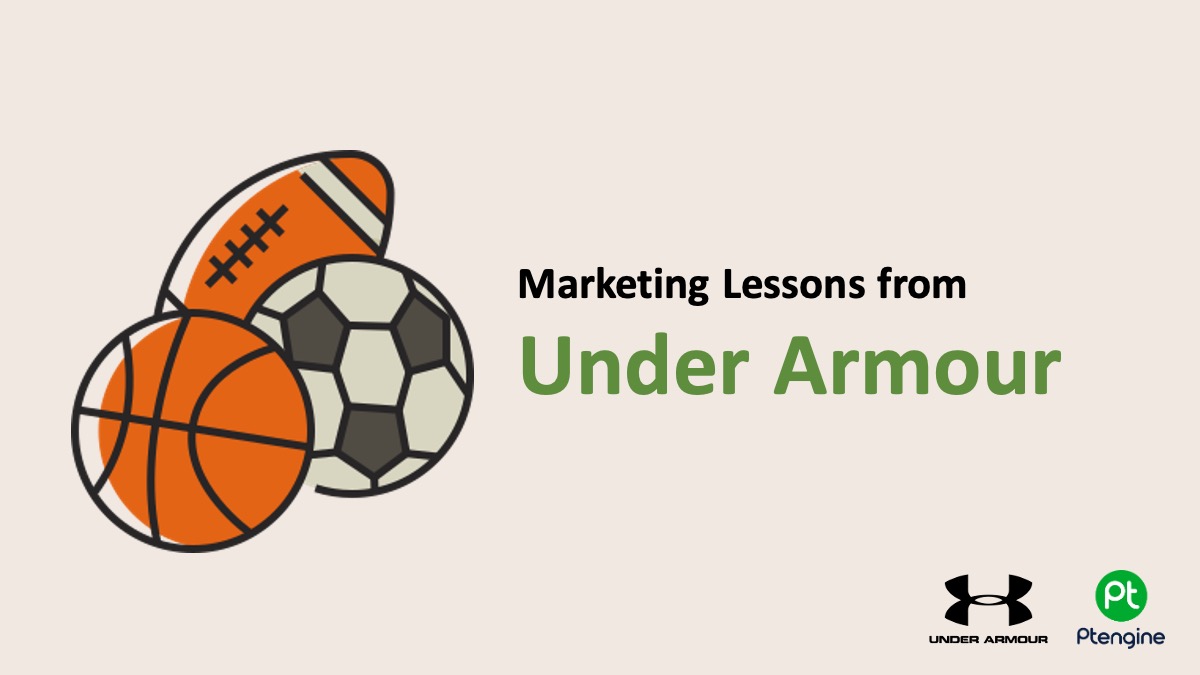
Under Armour: Marketing Strategies That Took on the Sportswear Titans
2024/08/27
You can read this article in about 26 minutes
Introduction
Under Armour didn’t start as a global giant in the sportswear industry. It began as an underdog, competing against well-established brands like Nike and Adidas. But through smart, bold marketing, Under Armour has grown into a powerhouse.
This article breaks down the key campaigns and strategies that fueled Under Armour’s rise. We’ll explore how the brand used innovative product launches, high-profile endorsements, and digital integration to carve out its place in the market. Along the way, we’ll highlight what e-commerce marketers can learn from Under Armour marketing and how you can apply these lessons to your own brand.
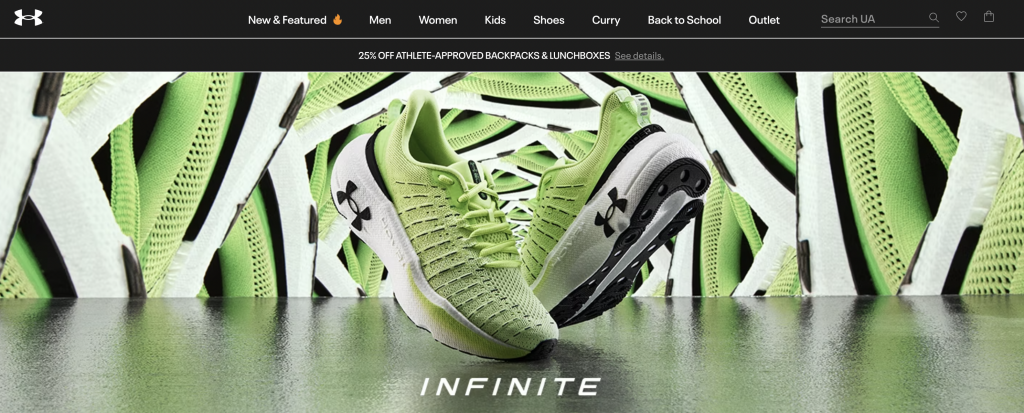
Let’s dive into the playbook that took Under Armour from the underdog to a leader in the sportswear industry.
Section 1: The “I Will” Campaign
Under Armour’s “I Will” campaign was a game-changer. Launched to compete head-on with sportswear giants, this campaign focused on the gritty determination and relentless drive of athletes. The message was clear: success isn’t about talent alone—it’s about the will to push beyond limits. This resonated with athletes who see themselves as underdogs, much like Under Armour did in its early days.

Key Elements:
- Target Audience: The campaign zeroed in on serious athletes who value hard work and perseverance over flashy appearances.
- Messaging: The slogan “I Will” was a powerful call to action, encouraging athletes to overcome obstacles and push themselves harder.
- Impact: The campaign solidified Under Armour’s image as a brand for those who are all about performance, not just style.
What E-Commerce Marketers Can Learn:
- Resonate with Your Core Audience: Under Armour marketing shows the importance of speaking directly to your target market’s values and aspirations. Know who your audience is and craft a message that connects with them on an emotional level.
- Differentiate Through Messaging: In a crowded market, strong, distinctive messaging can set your brand apart. The “I Will” campaign distinguished Under Armour from competitors by emphasizing grit over glamour.
- Consistency Is Key: Repeating a powerful message across different platforms ensures that it sticks. Under Armour consistently used “I Will” to reinforce its brand identity, making it memorable and impactful.
By focusing on what drives their core audience, Under Armour used the “I Will” campaign to carve out a unique space in the sportswear market. For e-commerce marketers, the takeaway is clear: find your brand’s unique voice and use it to connect deeply with your customers.
Section 2: Innovative Product Launches – HeatGear and ColdGear
One of Under Armour’s earliest and most impactful moves was the launch of their HeatGear and ColdGear lines. These products weren’t just new items on the market; they introduced a completely new category of performance apparel designed to keep athletes comfortable in extreme conditions. HeatGear was created to keep athletes cool, dry, and light in hot weather, while ColdGear provided warmth without the bulk in cold environments. These innovations quickly set Under Armour apart from traditional cotton-based athletic wear.
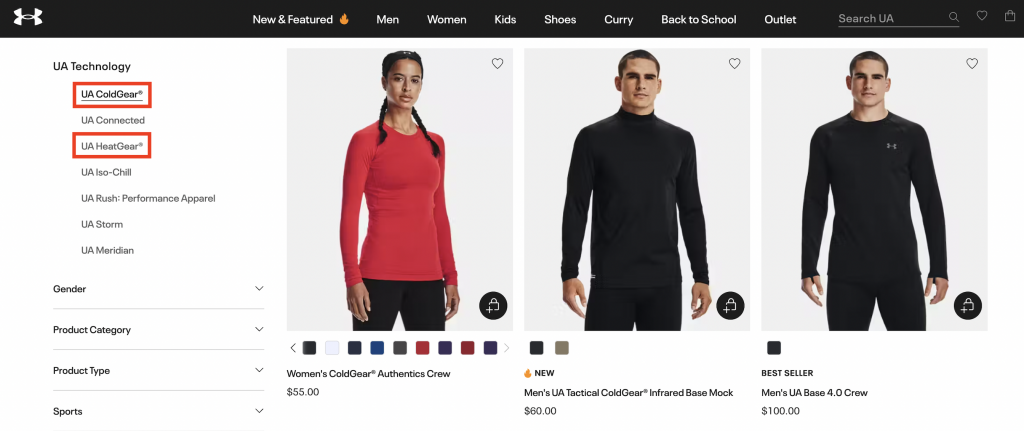
Key Elements:
- Product Differentiation: Under Armour identified a gap in the market for performance-enhancing fabrics and filled it with products that offered real, tangible benefits to athletes.
- Educational Marketing: Under Armour didn’t just sell these products; they educated consumers on why they were superior. The brand focused on explaining how the technology worked and why it would improve athletic performance.
- Building Brand Authority: By introducing these specialized products, Under Armour positioned itself as a leader in performance apparel, setting the foundation for its brand identity.
What E-Commerce Marketers Can Learn:
- Innovate to Stand Out: Under Armour marketing teaches us that innovation is key to differentiating your brand in a competitive market. Look for gaps or unmet needs in your industry, and be the brand that offers a solution.
- Educate Your Audience: When you launch a new product, especially something innovative, take the time to educate your customers on why it’s valuable. Clear, informative marketing can help turn curiosity into conversions.
- Establish Brand Authority: Introduce products that not only meet a need but also reinforce your brand’s position as an industry leader. This helps build long-term trust and loyalty among your customers.
Under Armour’s success with HeatGear and ColdGear highlights the power of product innovation and the importance of educating your audience. For e-commerce marketers, the lesson is to focus on how your products can solve real problems for your customers and to communicate that value clearly and effectively.
Section 3: Under Armour Marketing Success – The Stephen Curry Partnership
One of Under Armour’s boldest and most successful moves was signing NBA star Stephen Curry. At the time, Curry wasn’t the biggest name in basketball, but Under Armour saw potential. This partnership turned out to be a game-changer for both Curry and the brand. As Curry’s career skyrocketed, becoming one of the most popular and successful athletes in the world, Under Armour’s presence in the basketball market grew exponentially.
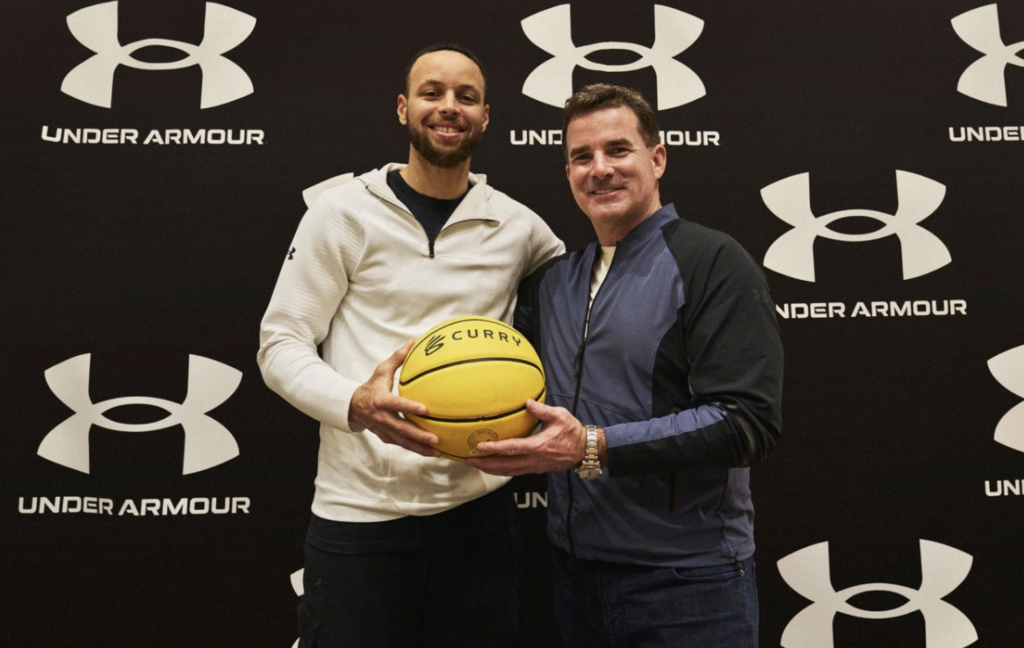
Key Elements:
- Betting on Emerging Talent: By signing Curry before he became a household name, Under Armour took a calculated risk that paid off massively. They saw an opportunity where others didn’t and capitalized on it.
- The Curry Signature Line: Under Armour didn’t just sign Curry; they built a whole product line around him. The Curry signature shoes became incredibly popular, helping Under Armour gain significant market share in the basketball segment.
- Brand Alignment: Curry’s persona—hardworking, humble, and a bit of an underdog—aligned perfectly with Under Armour’s brand identity. This synergy made the endorsement feel authentic and resonated strongly with consumers.
What E-Commerce Marketers Can Learn:
- Identify and Invest in Rising Stars: Under Armour marketing teaches us the value of recognizing emerging talent and aligning your brand with it early. In the e-commerce space, this could mean partnering with up-and-coming influencers or creators who align with your brand values.
- Build Around Your Partnerships: Don’t just settle for a basic endorsement. Create a product or campaign that fully leverages the partnership, as Under Armour did with Curry’s signature line. This can lead to greater engagement and sales.
- Authenticity Matters: Choose partnerships that genuinely reflect your brand’s identity. Consumers can tell when a partnership feels forced versus when it’s a natural fit. Authenticity builds trust and long-term loyalty.
Under Armour’s strategic partnership with Stephen Curry illustrates the power of high-profile endorsements, especially when they are built on authenticity and mutual growth. For e-commerce marketers, the takeaway is to look for partnerships that align with your brand’s values and to fully invest in them to maximize their potential.
Section 4: Under Armour Marketing – The “I Will What I Want” Campaign
Under Armour marketing took a bold step forward with the “I Will What I Want” campaign, which targeted female athletes in a way the brand had never done before. Historically focused on male athletes, Under Armour recognized an opportunity to connect with women who were breaking barriers in sports and beyond. The campaign featured powerful female figures like ballerina Misty Copeland and supermodel Gisele Bündchen, both of whom embodied the message of defying expectations and overcoming obstacles.

Key Elements:
- Targeting a New Audience: Under Armour shifted its focus to female athletes, a market that was underserved by the brand at the time. This move helped diversify their audience and expand their reach.
- Empowering Messaging: The slogan “I Will What I Want” resonated deeply with women who valued independence, strength, and self-determination. It wasn’t just about sports; it was about empowerment in all aspects of life.
- Authentic Representation: The campaign showcased real, strong women who were excelling in their fields. This authenticity helped Under Armour connect with female consumers on a more personal and meaningful level.
What E-Commerce Marketers Can Learn:
- Expand Your Audience Thoughtfully: Under Armour marketing shows the importance of recognizing and addressing underserved segments of your market. If your brand primarily targets one demographic, consider how you might broaden your appeal without losing your core identity.
- Empower Through Messaging: Create campaigns that speak to the values and aspirations of your audience. Empowering messages that resonate on an emotional level can create a strong connection between your brand and your customers.
- Authenticity in Representation: Ensure that your marketing campaigns authentically represent the audience you’re targeting. Authenticity fosters trust and loyalty, which are crucial for long-term brand success.
The “I Will What I Want” campaign was a pivotal moment in Under Armour marketing, successfully broadening the brand’s appeal to a new, empowered audience. For e-commerce marketers, the lesson is to consider how you can authentically expand your brand’s reach by connecting with new audiences through empowering and relevant messaging.
Section 5: Under Armour Marketing – Digital Fitness Ecosystem with MyFitnessPal and MapMyFitness
Under Armour marketing took a significant leap into the digital space by acquiring popular fitness apps MyFitnessPal and MapMyFitness. This move wasn’t just about expanding their product line; it was about creating a comprehensive digital fitness ecosystem that integrated technology with performance apparel. By merging these platforms with their existing product offerings, Under Armour positioned itself as a leader in the connected fitness revolution.
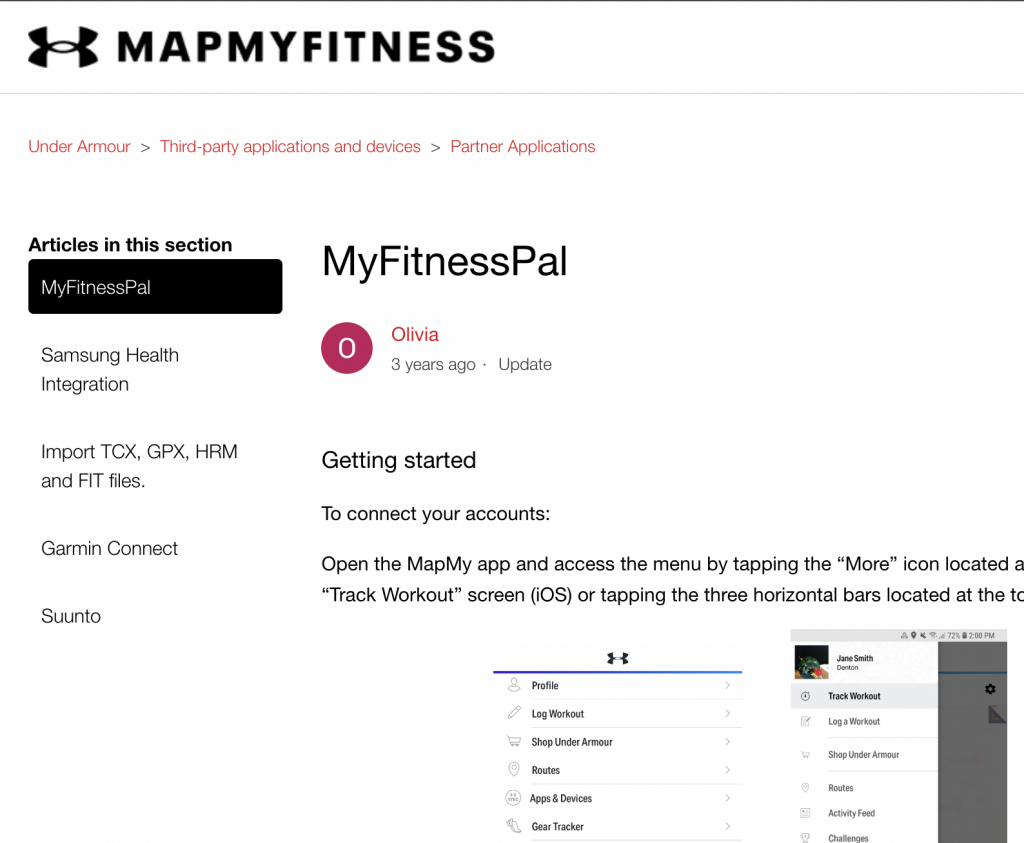
Key Elements:
- Expanding into Digital Fitness: Under Armour recognized the growing trend of digital fitness and made a strategic move to become a major player in this space. These acquisitions allowed the brand to offer a complete fitness experience that combined data tracking, community engagement, and performance-enhancing gear.
- Creating an Ecosystem: By integrating these apps with their products, Under Armour created a seamless experience where users could track their workouts, monitor their diet, and optimize their performance—all while wearing Under Armour gear. This holistic approach added significant value to their offerings.
- Building Community: The digital platforms fostered a strong sense of community among users. By participating in challenges, sharing progress, and engaging with other fitness enthusiasts, users became more connected to the Under Armour brand.
What E-Commerce Marketers Can Learn:
- Leverage Digital Tools: Under Armour marketing demonstrates the importance of embracing digital tools to enhance your brand’s offerings. Consider how technology can be integrated into your products or services to create added value for your customers.
- Create a Connected Ecosystem: Think beyond individual products. How can you create a connected ecosystem that offers a more comprehensive experience for your customers? This approach can lead to increased engagement and loyalty.
- Foster Community: Use digital platforms to build a community around your brand. Engaging customers through challenges, social sharing, and interactive features can create a sense of belonging that strengthens brand loyalty.
Under Armour’s foray into digital fitness through MyFitnessPal and MapMyFitness showcases the brand’s forward-thinking approach to marketing. For e-commerce marketers, the takeaway is to explore how digital tools and platforms can be integrated into your brand’s offerings to create a more engaging, holistic experience for your customers.
Section 6: Under Armour Marketing – Global Expansion Strategy
Under Armour marketing took a bold step with its global expansion strategy, targeting international markets to extend its reach beyond the United States. Recognizing the potential for growth in regions like Asia, particularly China, Under Armour invested heavily in building brand awareness and establishing a strong presence in these new markets. This global push was crucial in transforming Under Armour from a successful U.S. brand into a global powerhouse.
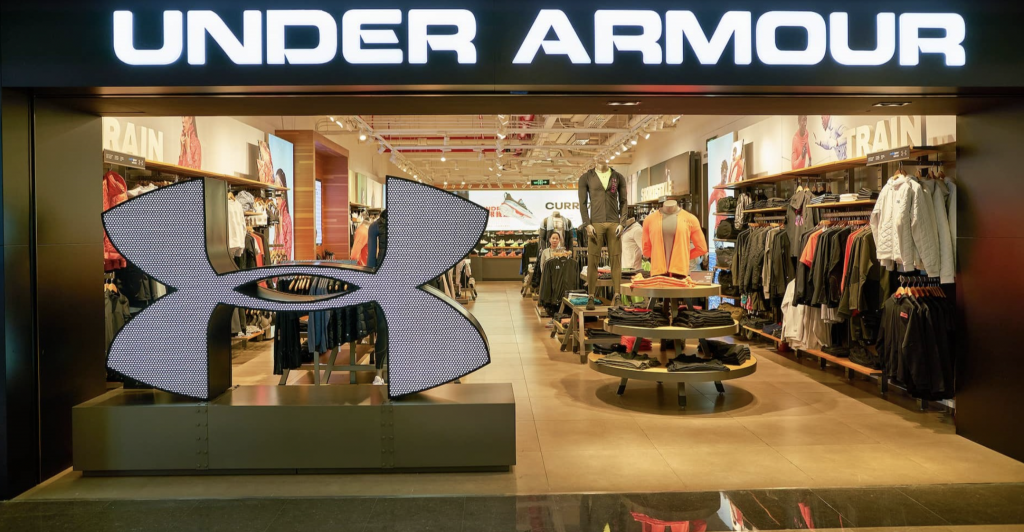
Key Elements:
- Market Research and Localization: Under Armour didn’t just replicate its U.S. marketing strategies abroad. The brand conducted thorough market research to understand the unique preferences and cultural nuances of each region. They then tailored their marketing campaigns, product offerings, and even store designs to resonate with local consumers.
- Strategic Partnerships: In China, Under Armour partnered with local celebrities and athletes to enhance brand credibility and appeal. These partnerships helped the brand connect with consumers who may not have been familiar with Under Armour’s products.
- Expanding Product Lines: Under Armour introduced products that catered specifically to the needs and tastes of consumers in these new markets. This included adjustments in sizing, style, and even fabric choices to suit local climates and cultural preferences.
What E-Commerce Marketers Can Learn:
- Understand and Adapt to New Markets: Under Armour marketing underscores the importance of not taking a one-size-fits-all approach when expanding globally. Thorough market research and localization are key to resonating with new audiences.
- Leverage Local Influencers: Partnering with local influencers and celebrities can significantly boost your brand’s credibility in new markets. This helps build trust and familiarity, which are crucial when entering competitive international markets.
- Tailor Your Offerings: Adjust your products or services to meet the specific needs and preferences of each market. This might involve altering product features, packaging, or even your marketing messages to better align with local consumer behavior.
Under Armour’s global expansion strategy highlights the importance of adaptability and local market understanding in successfully entering and growing in international markets. For e-commerce marketers, the lesson is clear: when expanding globally, it’s essential to invest in market research, adapt your strategy to fit local cultures, and build strong partnerships that can help you establish a foothold in new regions.
Conclusion: Key Takeaways from Under Armour Marketing
Under Armour’s rise from an underdog brand to a global sportswear powerhouse is a testament to the power of bold, strategic marketing. Here are the key lessons e-commerce marketers can take away from Under Armour’s playbook:
- Embrace Grit and Authenticity: Campaigns like “I Will” and the Stephen Curry partnership show the value of aligning your brand with authentic, relatable stories that resonate with your core audience.
- Innovate to Differentiate: The launch of HeatGear and ColdGear demonstrated how innovation can set your brand apart. Always look for ways to offer something unique that meets a real need in the market.
- Expand Thoughtfully: Whether it’s targeting new demographics with campaigns like “I Will What I Want” or entering new markets with a localized strategy, Under Armour shows that thoughtful expansion can fuel growth without diluting your brand.
- Leverage Technology: Under Armour’s integration of digital tools through acquisitions like MyFitnessPal highlights the importance of staying ahead of tech trends. Incorporating digital elements into your offerings can create a more comprehensive and engaging customer experience.
- Go Global with Purpose: Under Armour’s global expansion strategy teaches us the importance of understanding and adapting to local markets. Invest in research, tailor your offerings, and build local partnerships to successfully grow your brand internationally.
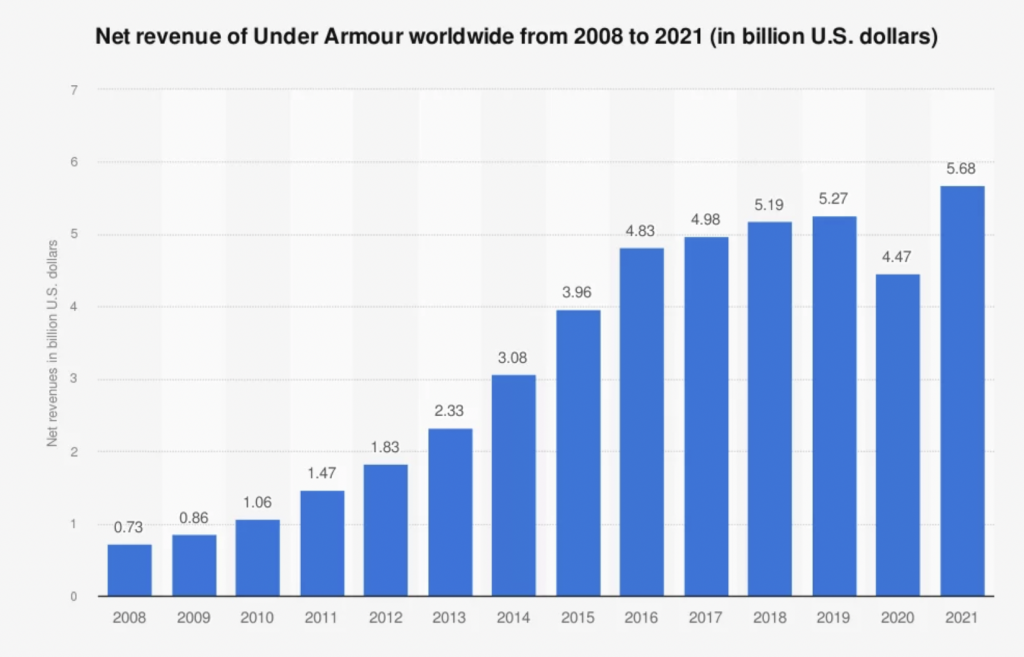
By applying these principles, e-commerce marketers can learn from Under Armour marketing and create strategies that not only drive growth but also build lasting brand loyalty. Whether you’re an emerging brand or looking to scale globally, these lessons can help you carve out a strong, authentic presence in the market.